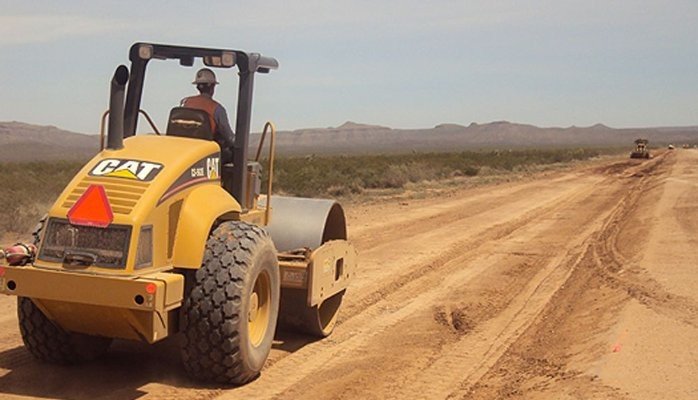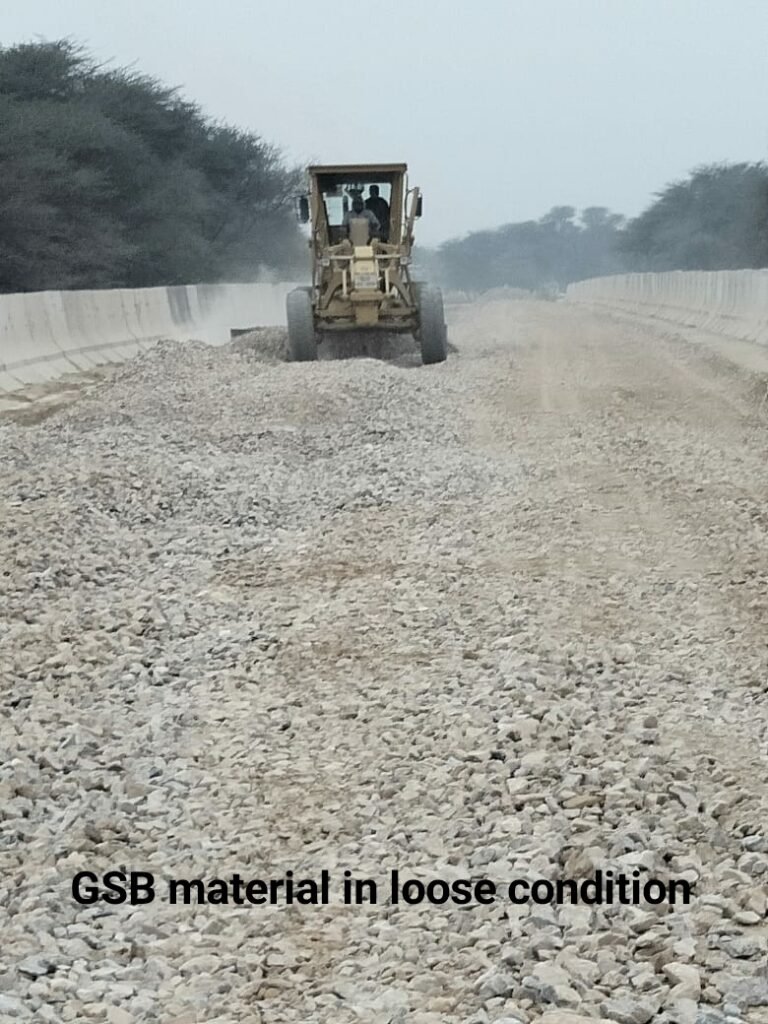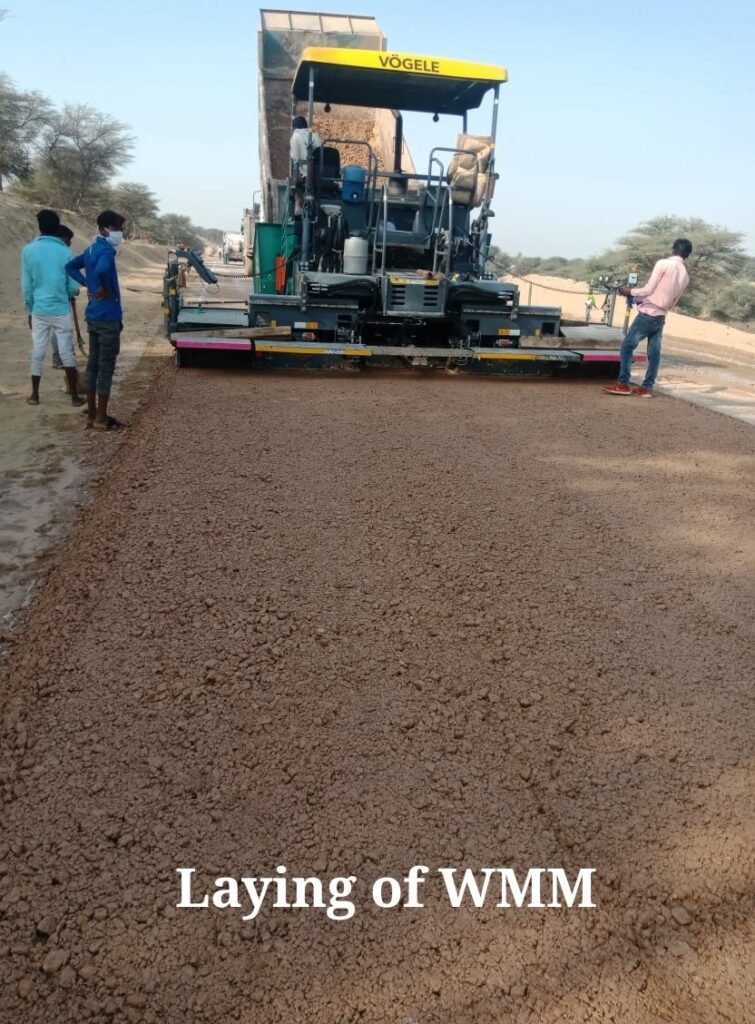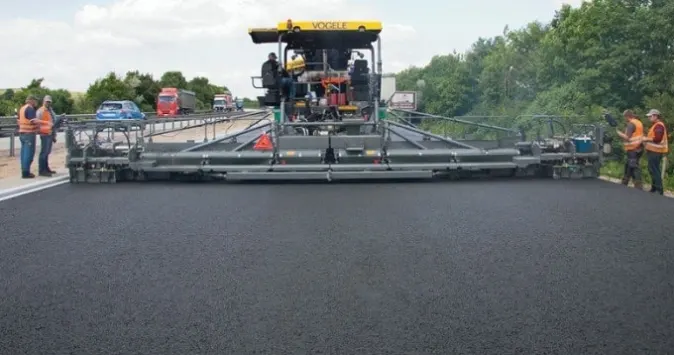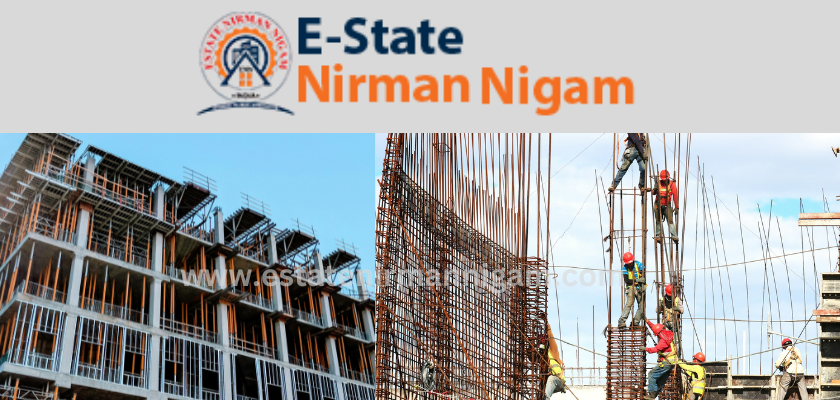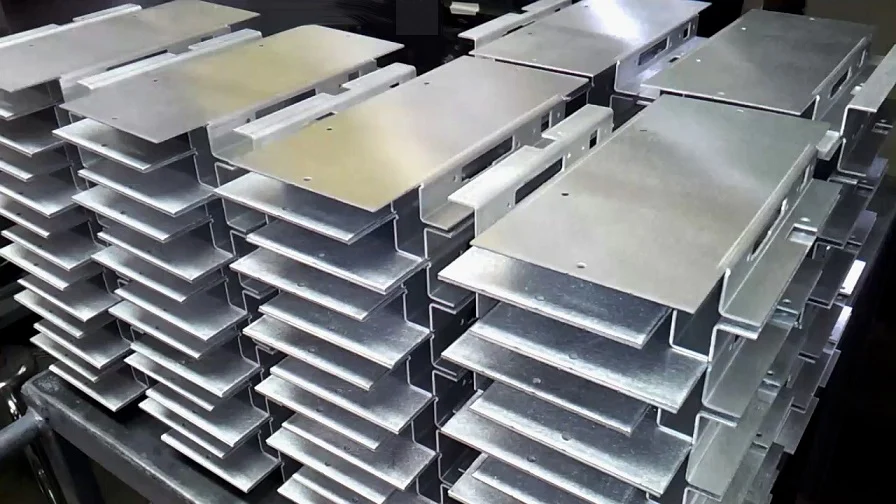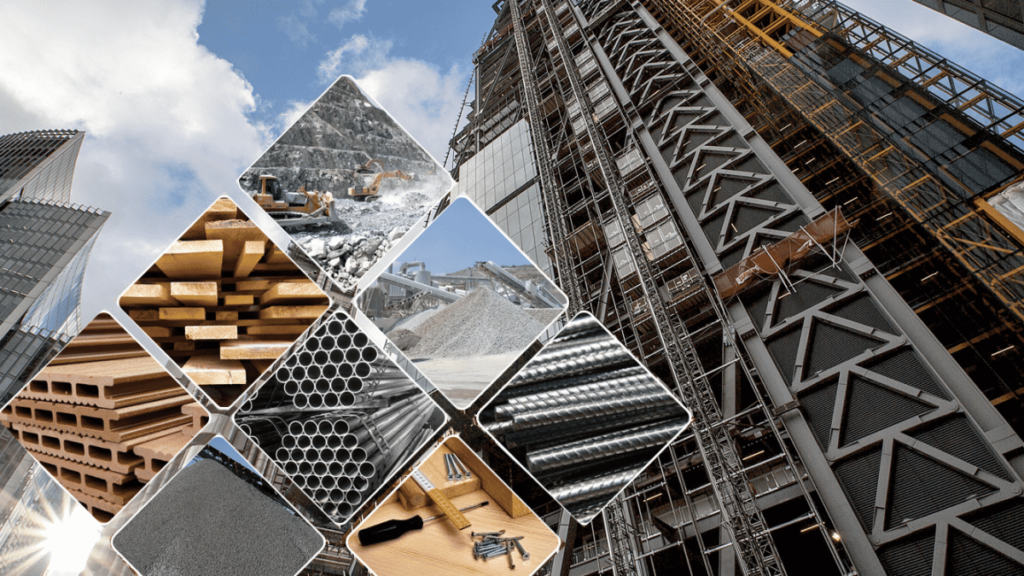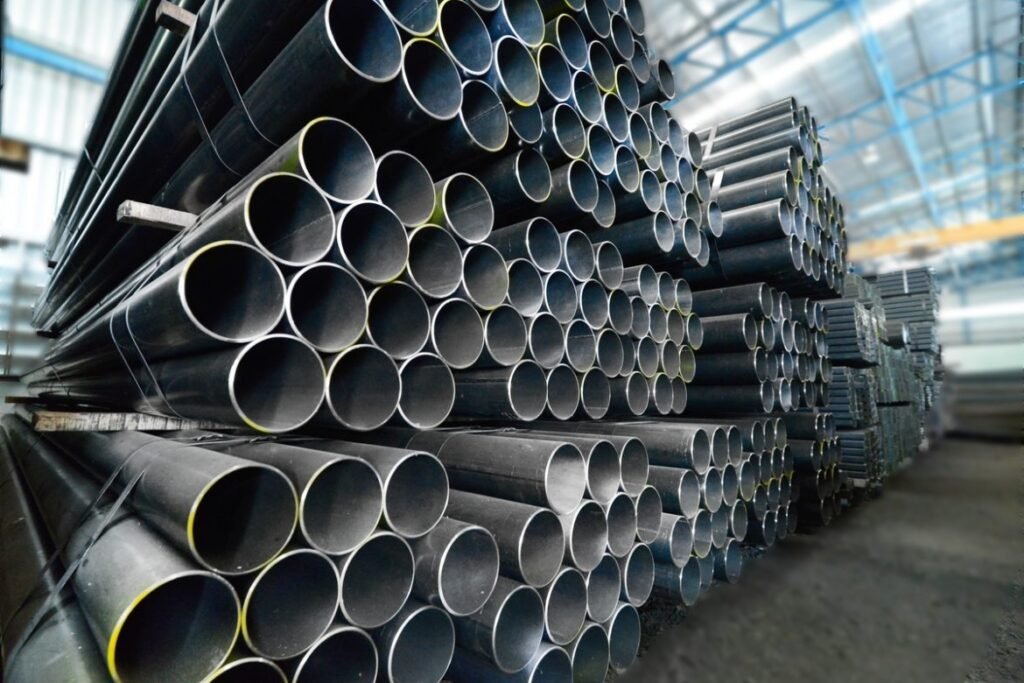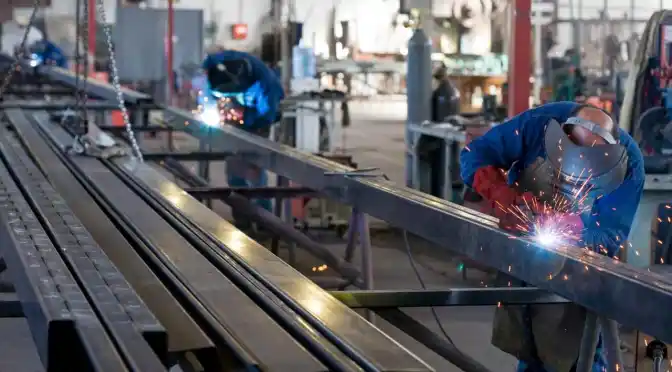BUILDING CONSTRUCTION 15TH FLOOR IN E-STATE NIRMAN NIGAM
Constructing a 15th floor building is a complex process that involves several stages and requires a comprehensive understanding of engineering, architecture, materials science, and construction management. Below is a breakdown of the construction process, covering various aspects such as planning, design, foundation, structural framework, utilities installation, interior finishing, and safety measures in the E-state NirmanNigam
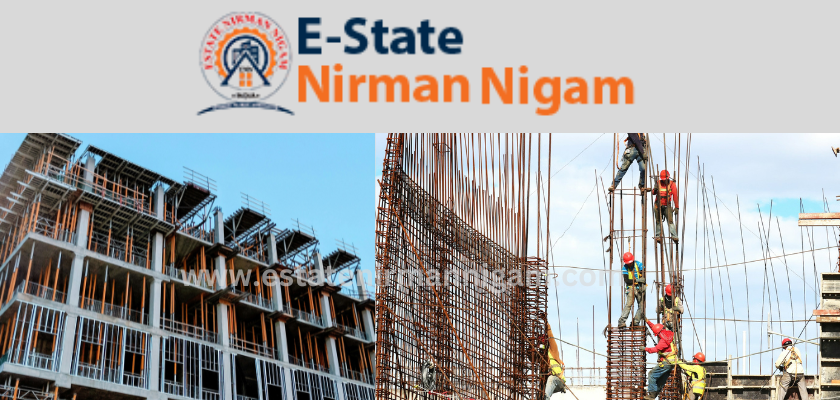
Pre-construction Phase:-
Site Selection and Acquisition: The process begins with selecting a suitable site for the building, considering factors such as location, zoning regulations, accessibility, and land cost.
Feasibility Study: Conducting a feasibility study to assess the economic, environmental, and regulatory viability of the project.
Architectural Design: Engaging architects to design the building layout, facades, and overall aesthetics while ensuring compliance with building codes and regulations.
Engineering Analysis: Structural engineers analyze the building’s load-bearing capacity, wind resistance, seismic considerations, and other structural aspects.
Permitting: Obtaining necessary permits and approvals from local authorities before commencing construction.

Foundation Construction:
Site Preparation: Clearing the site of any debris, vegetation, or obstructions.
Excavation: Digging trenches and excavating the foundation pit to the required depth.
Foundation Design: Constructing the foundation according to the structural design, which may involve techniques such as shallow foundations, deep foundations (e.g., piles or caissons), or raft foundations.
Reinforcement: Placing steel reinforcement bars (rebar) and formwork to reinforce the concrete foundation.
Concrete Pouring: Pouring concrete into the foundation forms and allowing it to cure to achieve the required strength.
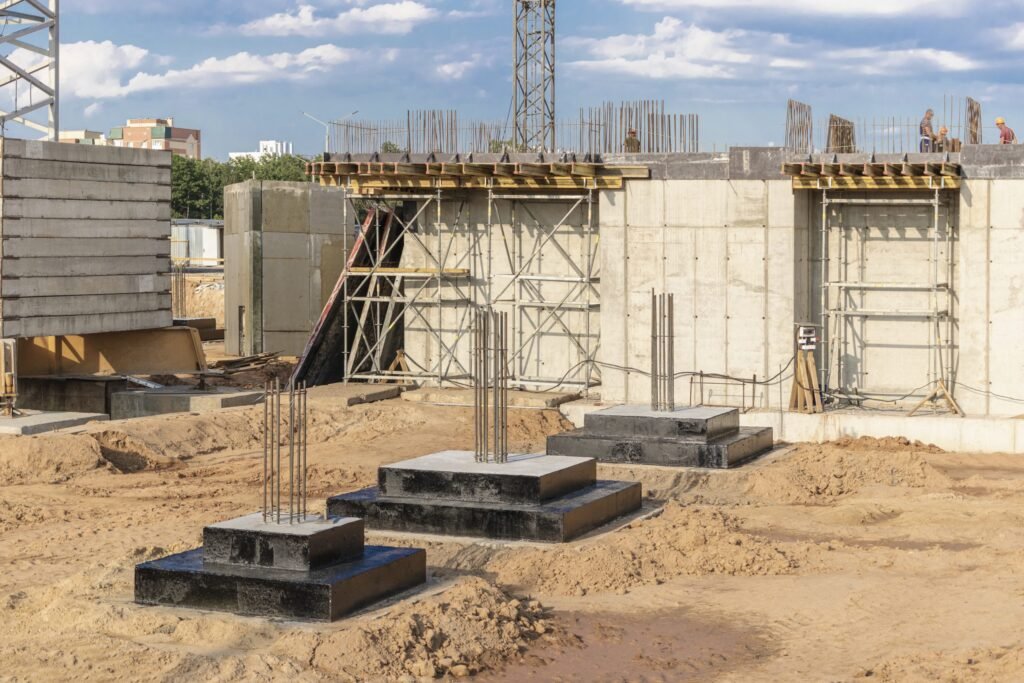
Structural Framework:
Structural frame-work process in the E-state Nirman Nigam
Vertical Structure: Erecting the vertical columns and core walls that will support the building’s floors and provide stability.
Floor Slabs: Constructing reinforced concrete floor slabs or using precast concrete panels for faster installation.
Horizontal Bracing: Installing horizontal bracing or shear walls to resist lateral forces such as wind or seismic loads.
Elevator Shafts and Stairwells: Building elevator shafts and stairwells to provide vertical circulation within the building.
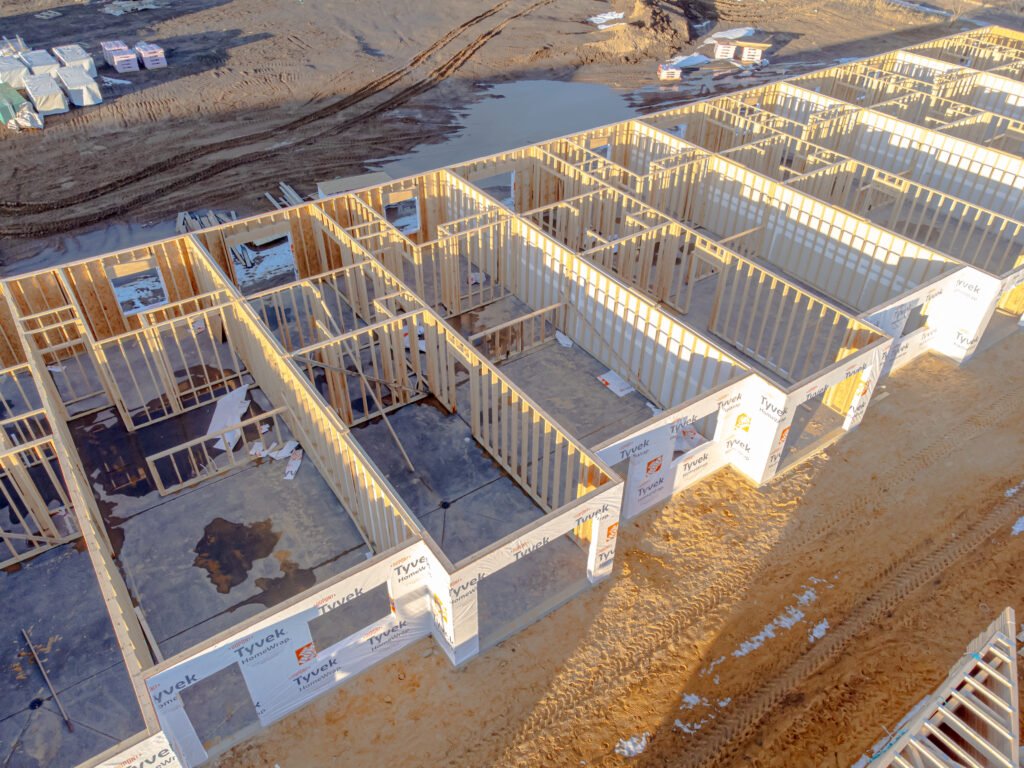
Utilities Installation:
Mechanical Systems: Installing HVAC (heating, ventilation, and air conditioning) systems, plumbing, and fire protection systems.
Electrical Systems: Wiring the building for electricity, including lighting, power outlets, and communication systems.
Elevators: Installing elevator systems to provide vertical transportation between floors.
Safety Features: Implementing safety measures such as smoke detectors, fire alarms, sprinkler systems, and emergency exits.
Exterior Finishing:
Facade Cladding: Applying exterior cladding materials such as glass, metal panels, brick, or stone to the building’s facade.
Windows and Doors: Installing windows, doors, and curtain walls to provide natural light, ventilation, and access to the building’s interior.
Roofing: Constructing the roof structure and applying roofing materials to provide weather protection and insulation.
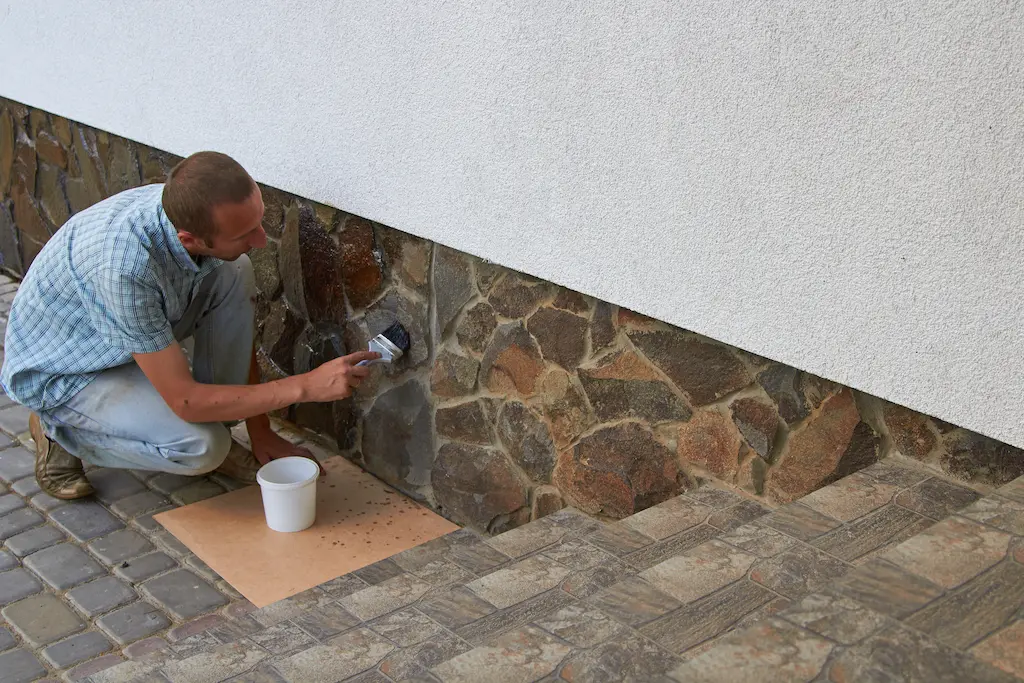
Interior Finishing:
Partition Walls: Building interior partition walls to divide the space into rooms, offices, or other functional areas.
Flooring: Installing flooring materials such as tiles, hardwood, carpet, or vinyl.
Ceilings: Finishing the ceilings with materials such as drywall, suspended ceiling tiles, or acoustic panels.
Painting and Decorating: Painting interior walls and applying decorative finishes to enhance the aesthetic appeal of the building.
Final Touches and Testing:
Quality Control: Conducting quality inspections and testing to ensure that construction materials and workmanship meet the required standards.
Punch List: Addressing any remaining deficiencies or issues identified during the inspection process.
Commissioning: Testing and commissioning mechanical, electrical, and fire protection systems to ensure proper functionality.
Occupancy Permit: Obtaining a certificate of occupancy from the local building department, allowing the building to be occupied and used.
Post-construction Maintenance:
Regular Inspections: Conducting routine inspections and maintenance to ensure the ongoing safety and functionality of the building.
Repairs and Upgrades: Addressing any wear and tear, damage, or outdated systems through repairs or upgrades.
Tenant Fit-Outs: Assisting tenants with interior fit-outs and customization according to their specific needs.

Throughout the construction process, adherence to safety protocols, environmental regulations, and quality standards is paramount to ensure the durability, sustainability, and safety of the 15th floor building. Collaboration among architects, engineers, contractors, and subcontractors is essential for successful project execution and timely completion.this the process cam work with the E-state Nirman Nigam


